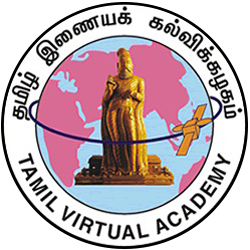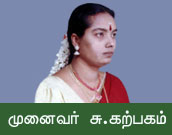Primary tabs
-
D06145 Lesson 5 Kuravanji Dance Dramas
This lesson talks about “Kuravanji”, a type of dance drama popular in Tamil. There are nearly 120 Kuravanji texts in Tamil. These are named either after the gods or the stalam in which the plot is set or the patrons who encouraged this art. The Kuravanji dance drama combines classical and folk elements. The earliest references to the fortune teller or kurathi viz. (a woman of the kurava clan among the hill folk), who is an important character in Kuravanji, are found in ancient texts such as the “Tholkappiam”, “Kurunthogai” and “Aganaanooru”. The fortune telling kurathi appears in “Kuram”, “Kuluvam” and “Kuravanji” - three literary forms that are a part of sittrilakkiyam (i.e. the minor literary genre) in Tamil. Of these, the Kuravanji is the most popular. Kuravanji dance dramas usually follow a set theme. The drama begins with “thodayam” or invocation. This is followed by “vinayagar varugai”, the appearance of a person dressed as Lord Vinayaka. Then the “kattiyangaaran” announces the paatudaithalaivan or (hero) who sets out in a procession. He is usually the local presiding deity or the ruler of the land. The thalaivi or heroine falls in love with the thalaivan and pines for him. Her sakis (i.e. friends) try to reassure her. A kurathi who arrives on the scene is summoned to read her palm and predict the future. The kurathi sings the glory of her tribe and describes the beauty of the mountainous region she comes from. She also waxes eloquent about her skills in foretelling the future. After invoking the gods and performing certain rituals, she forecasts the happy union of the thalaivi with the thalaivan. The thalaivi showers the kurathi with precious gifts. The rustic lilt of the kurathi’s songs and dance are the prime charm of Kuravanjis. There is also a comic element in Kuravanjis. The scene in which the kuravan who is the kurathi’s husband comes in search of her is humorous. Like other dance dramas, the structure of Kuravanji dramas fall into 5 sections- viz. the “aivagai santhigal”. They are exposition or mugam, rise in action or prathimugam, climax or karupam, fall in action or vilaivu and conclusion or denouement or thuithal. Dialogues and characterization are also important. All the 8 types of “suvai” or sentiments associated with drama are found in Kuravanji plays. The Kuravanji plays skillfully combine the sacred and the secular. In the olden days these plays were performed in temples. “Kumbesar Kuravanji”, “Chidambara Kuravanji” and “Sivan Malai Kuravanji” are a few examples of Kuravanji plays staged in temples. “Thirukkutralakuravanji” written by Thirikooda Rasappa Kavirayar is the most famous Kuravanji play noted for its poetic beauty. “Sarabendra Boobala Kuravanji” has the distinction of being the most often staged Kuravanji play.quote has the distinction of being the most often staged Kuravanji play.


